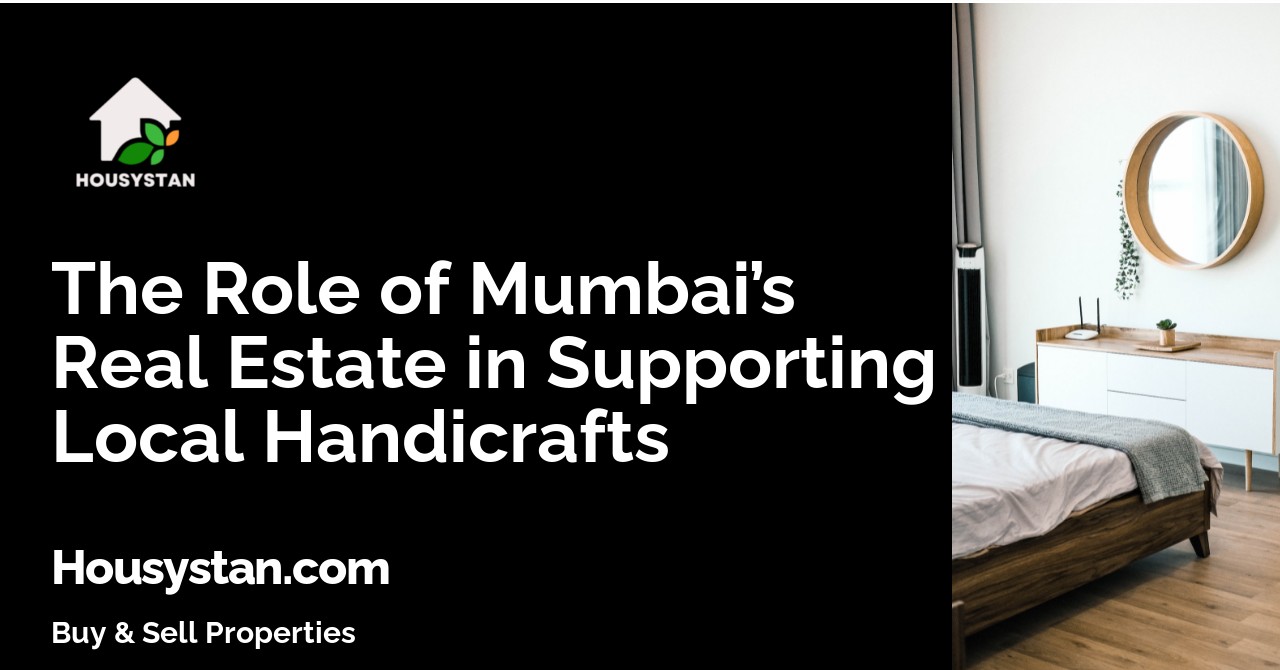The Role of Mumbai’s Real Estate in Supporting Local Handicrafts
Read latest blogs and articles from Housystan

The Information mentioned here was last updated on:
31/12/2025Mumbai, often referred to as the financial capital of India, stands as a beacon of opportunity for countless industries. One of the city’s lesser-known yet significant contributors to cultural preservation and economic growth is its thriving real estate sector, which plays a vital role in nurturing and promoting local handicrafts. As the city continues to expand, the synergy between Mumbai’s real estate developments and the handicraft community has become increasingly evident, creating new avenues for artisans and fostering a deeper appreciation for traditional crafts.
Mumbai’s real estate market has evolved rapidly, with modern residential complexes, commercial hubs, and retail spaces mushrooming across the city. Developers and property owners are now incorporating dedicated zones for artisan markets, craft exhibitions, and pop-up retail stores within their projects. This integration not only enhances the cultural value of these spaces but also provides craftsmen with direct access to urban consumers. As a result, local artisans benefit from increased visibility, higher sales, and opportunities to collaborate with designers, entrepreneurs, and retailers within Mumbai’s bustling neighborhoods.
Furthermore, real estate developers in Mumbai are increasingly recognizing the importance of supporting indigenous art forms. Many have begun to commission handcrafted decor, traditional murals, and bespoke furnishings from local artisans to add an authentic touch to their properties. This approach not only uplifts the aesthetic appeal of residential and commercial spaces but also ensures a steady demand for handcrafted products, thereby sustaining the livelihoods of numerous skilled artisans from Maharashtra and neighboring regions.
- Verified Tenants/Buyers
- Unlimited Property Listing
- Zero subscription/charges fee
The city’s prime locations, such as Bandra, Colaba, and Lower Parel, frequently host handicraft fairs and exhibitions, attracting both residents and tourists. These events, often held in upscale malls, community centers, and open-air plazas developed by leading real estate firms, provide artisans with a prestigious platform to showcase their work. This consistent exposure helps in preserving Mumbai’s rich cultural heritage while contributing to the city’s unique identity.
In summary, Mumbai’s dynamic real estate sector acts as a powerful catalyst for the promotion and sustenance of local handicrafts. By providing artisans with accessible marketplaces, collaborative opportunities, and platforms for cultural exchange, the city’s property landscape plays an instrumental role in supporting the creative economy. As Mumbai continues to grow, the partnership between real estate and the handicraft community will remain essential for preserving traditions and driving inclusive economic development.